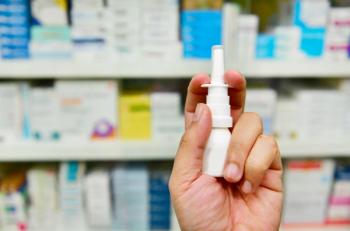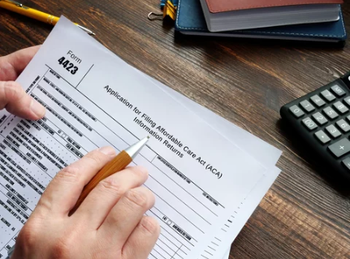
USPSTF Updates Preventive Aspirin Use Recommendation in CVD, CRC
There may be a small, but not overwhelming, benefit for certain individuals aged 40 to 59 years who have a slightly elevated risk of future cardiovascular disease (CVD) to start taking aspirin, according to an update released by the US Preventive Services Task Force (USPSTF).
Following a comprehensive review of evidence on the use of aspirin to prevent
Results were published today in
Those individuals in that category, up to age 59, who have a higher risk of future CVD, may consider a daily aspirin after consulting with their health care provider, the task force said.
Additional areas of focus include how aspirin may affect “CRC incidence and mortality in primary CVD prevention populations, as well as the harms (particularly bleeding) associated with aspirin use,” the USPSTF wrote.
The updated statement follows a draft recommendation
USPSTF recommendations are made by volunteer experts; their recommendations are not mandatory but grades of A and B are typically followed by payers and CMS.
In the report released Tuesday, age-related recommendations are broken down to adults aged 40 to 59 years who have at least a 10% 10-year CVD risk and adults 60 years and older.
In the 2016 recommendation, the age ranges covered were younger than 50 years, 50 to 59 years, 60 to 69 years, and 70 years or older.
For adults younger than 50 years and 70 years or older, the 2016 statement did not recommend initiating aspirin use, citing “insufficient evidence” on the balance between CVD and CRC primary prevention harms and benefits for both age groups; the recommendation was grade I.
Aspirin was, however, was recommended for those aged 50 to 59 with a 10% or greater 10-year CVD risk (grade B), while it was cited as being an individual choice for adults aged 60 to 69 years with the same risk (grade C).
The 2022 update addresses both of these, with the recommendations again differing between the younger vs older groups.
Now, the individual choice of initiating aspirin use has shifted to younger adults, those aged 40 to 59 years, with the USPSTF noting the benefit of the prevention method is small within this age group. The grade C recommendation also notes a greater potential benefit of preventive low-dose aspirin use among individuals with a low bleeding risk.
In contrast, for adults 60 years and older, the updated recommendation (grade D) is to not initiate low-dose aspirin as a primary preventive measure against CVD.
A low dose of aspirin is considered to be 100 mg/d or less, with most experts prescribing a daily dose of 81 mg. In fact,
“The USPSTF concludes with moderate certainty that aspirin use for the primary prevention of CVD events in adults aged 40 to 59 years who have a 10% or greater 10-year CVD risk has a small net benefit,” the organization concluded. “The USPSTF concludes with moderate certainty that initiating aspirin use for the primary prevention of CVD events in adults 60 years or older has no net benefit.”
The organization first recommends, prior to implementing this guidance, that patients and their health care providers hold discussions on implementing preventive aspirin therapy, noting that CVD risk estimation can be “imprecise and imperfect.”
Age should be considered, a CVD risk estimator should be used for patients aged 40 to 59 years, and shared decision-making should be utilized among those with a 10% or greater estimated CVD risk.
In addition, because this newest guidance focuses solely on persons with no history of CVD, signs or symptoms of CVD, or conditions that may necessitate aspirin use, in contrast to those already on aspirin therapy as primary prevention, according to
Reference
US Preventive Services Task Force. Aspirin use to prevent cardiovascular disease: US Preventive Services Task Force Recommendation Statement. JAMA. 2022;327(16):1577-1584. doi:10.1001/jama.2022.4983
Newsletter
Stay ahead of policy, cost, and value—subscribe to AJMC for expert insights at the intersection of clinical care and health economics.









































